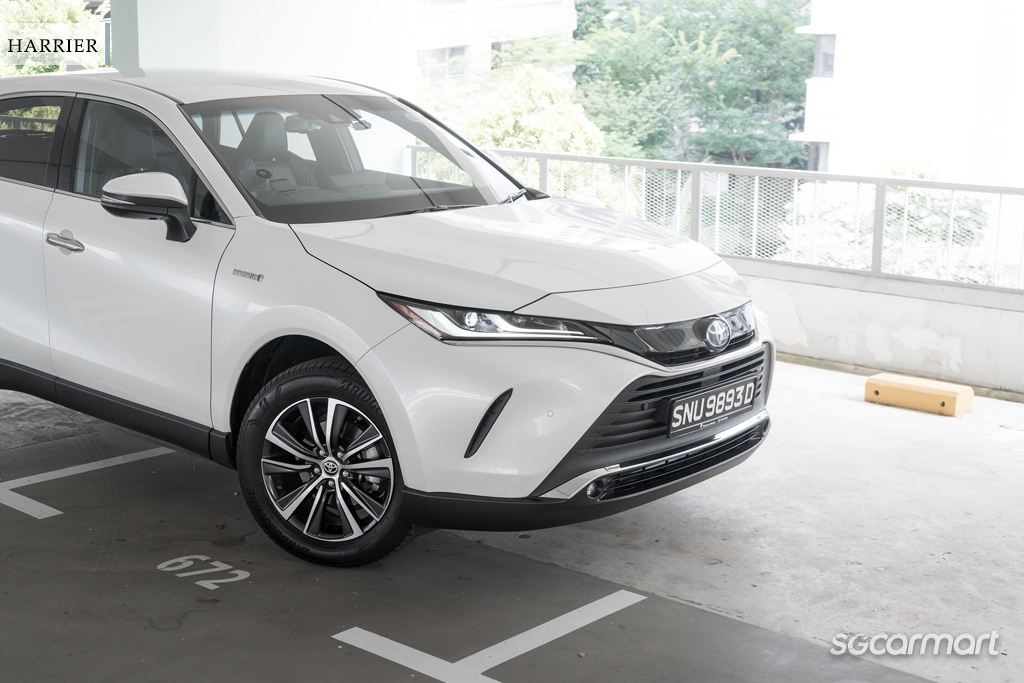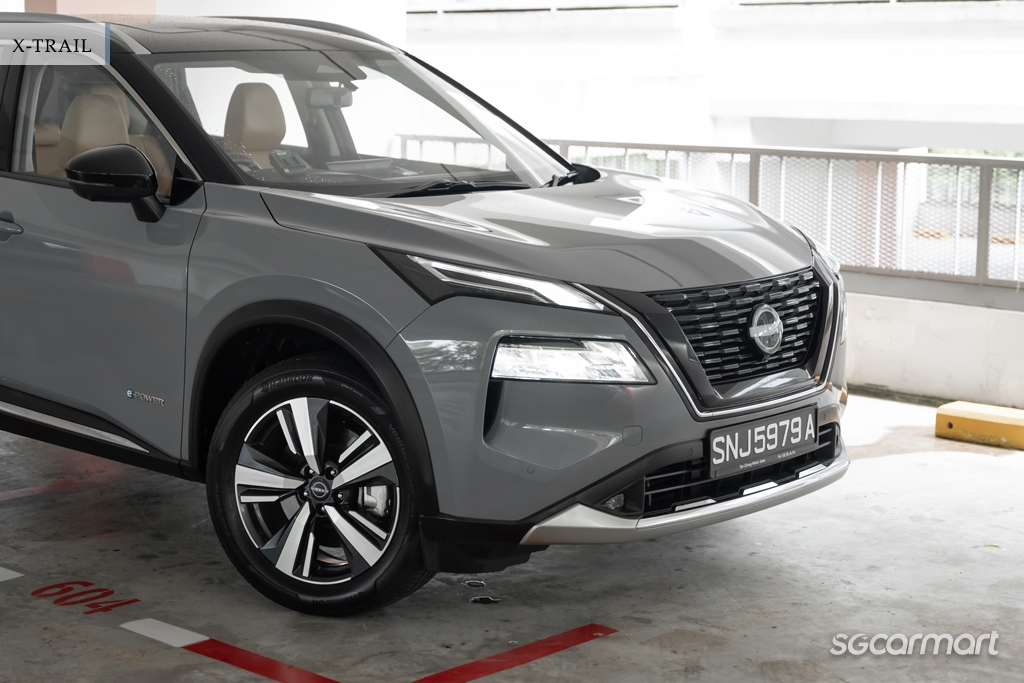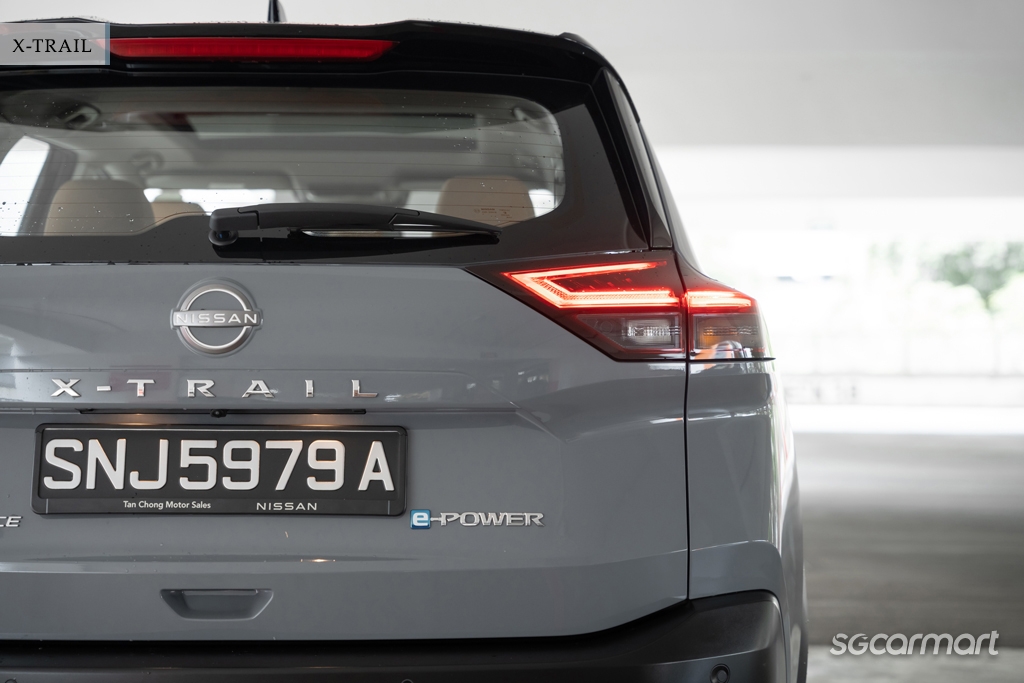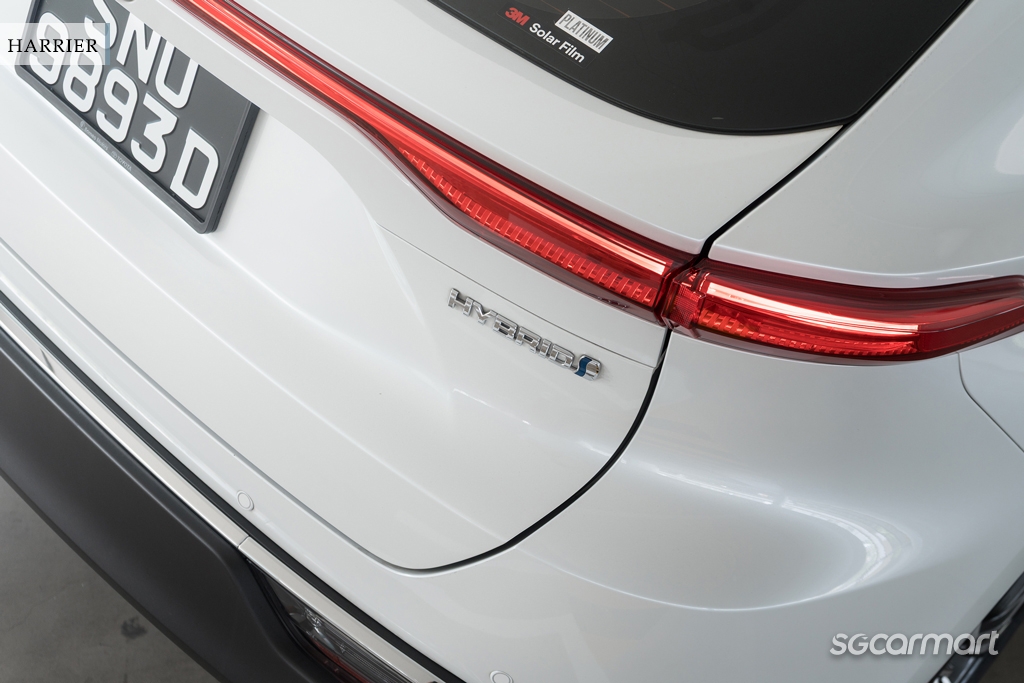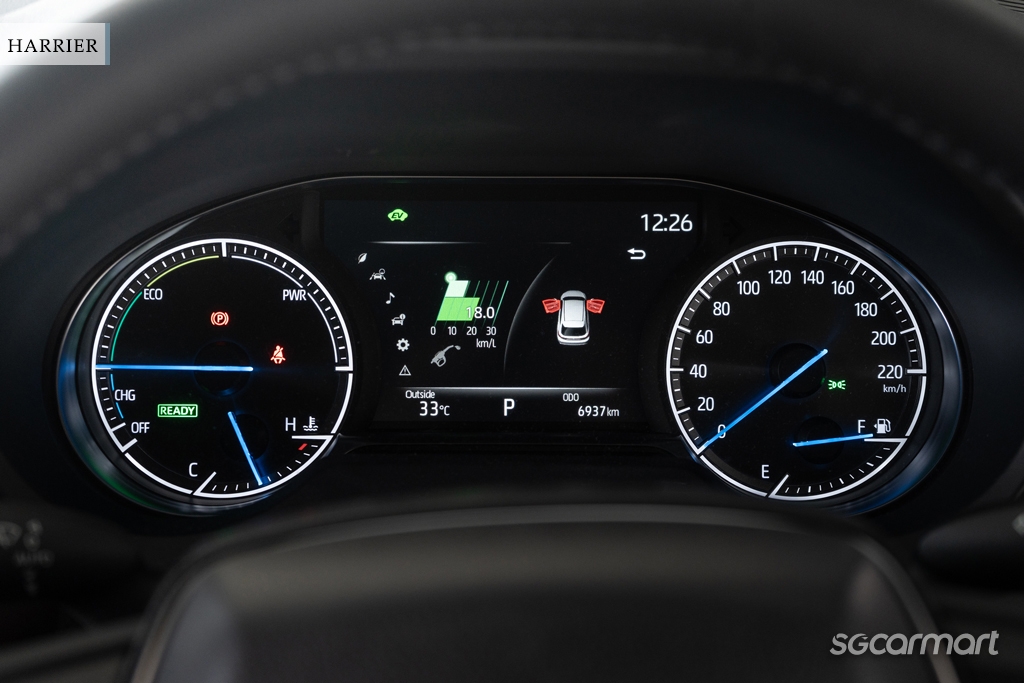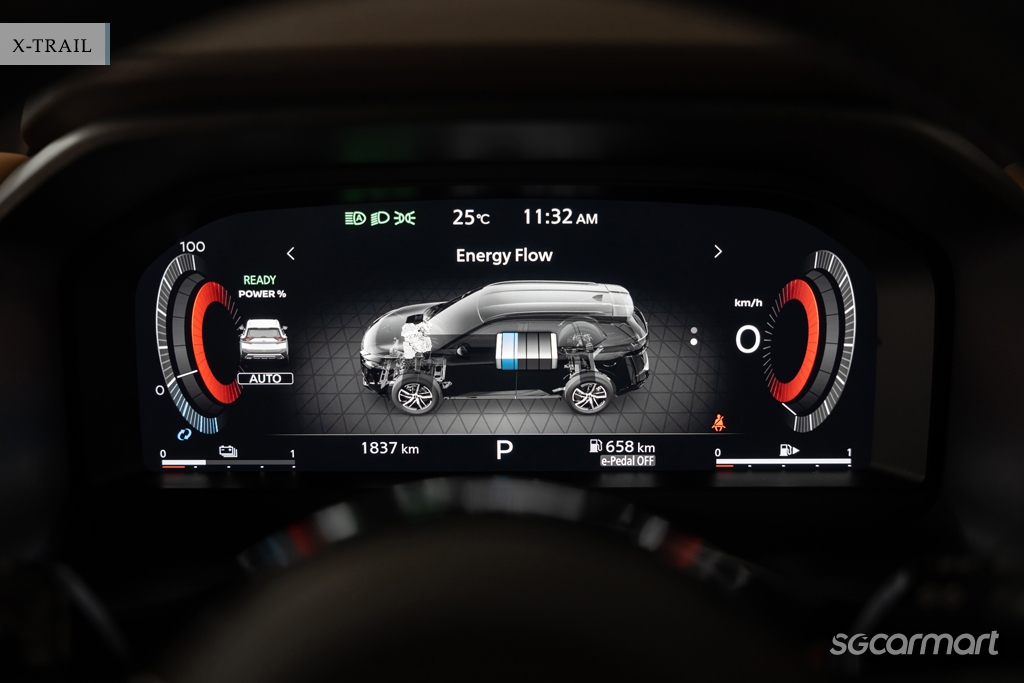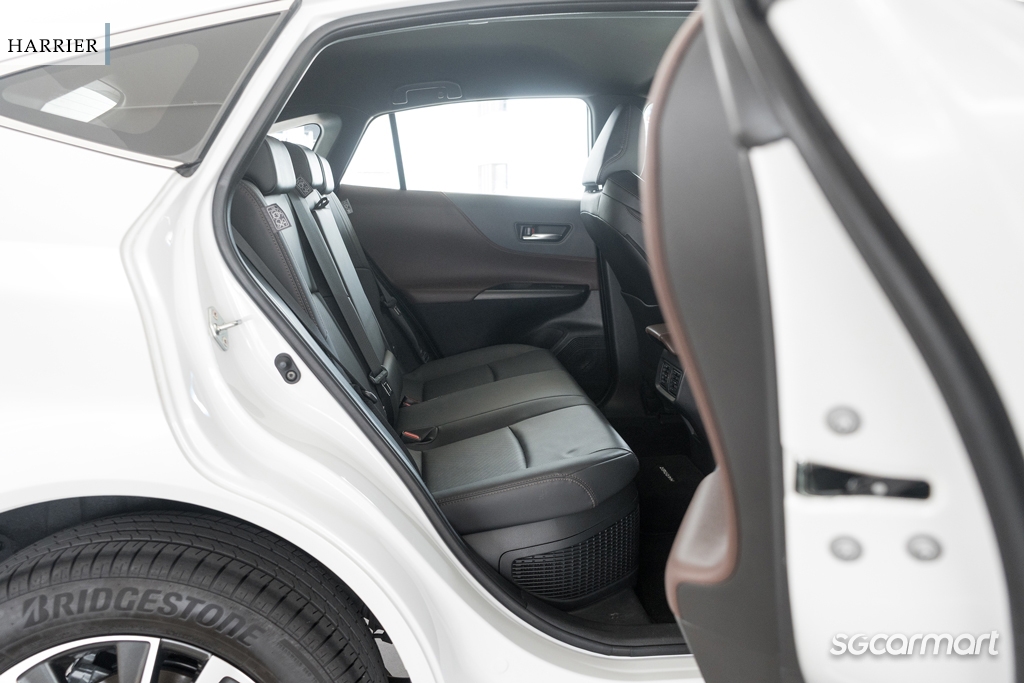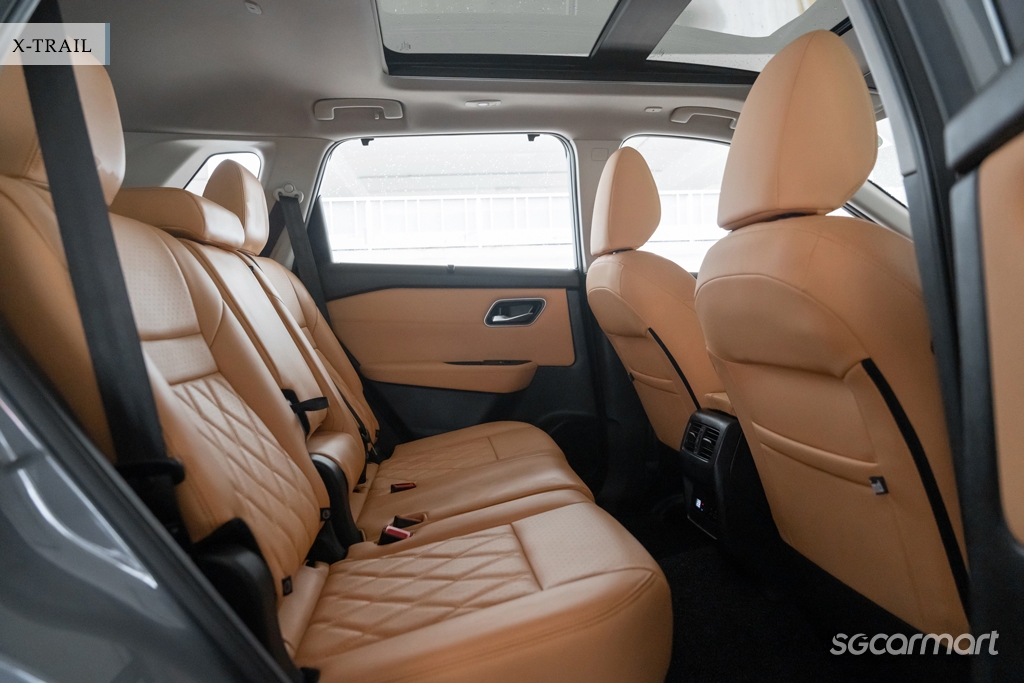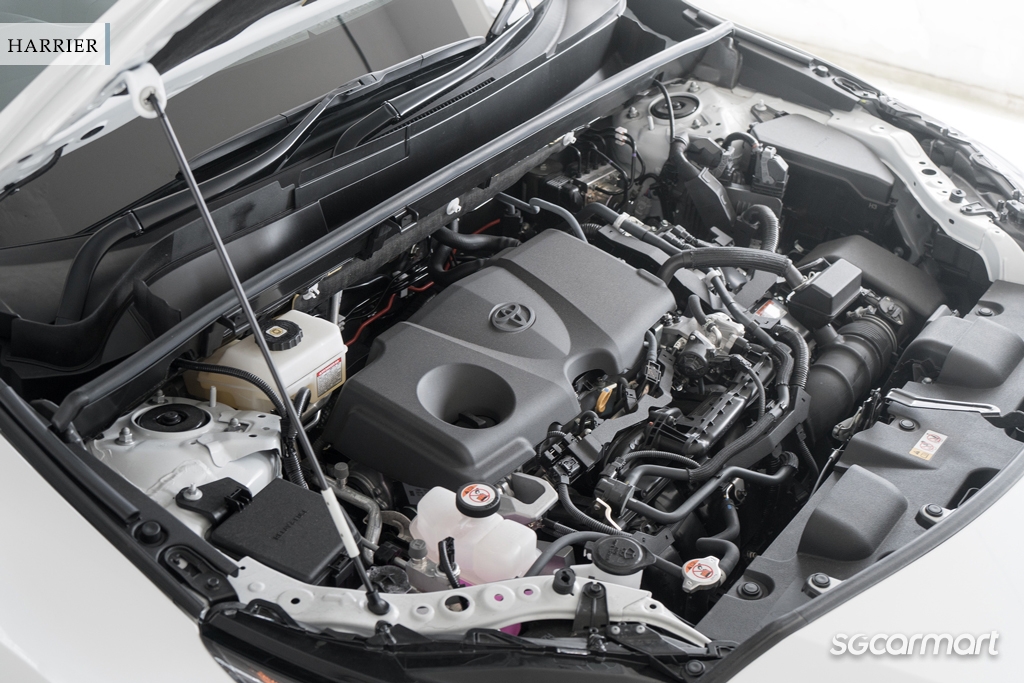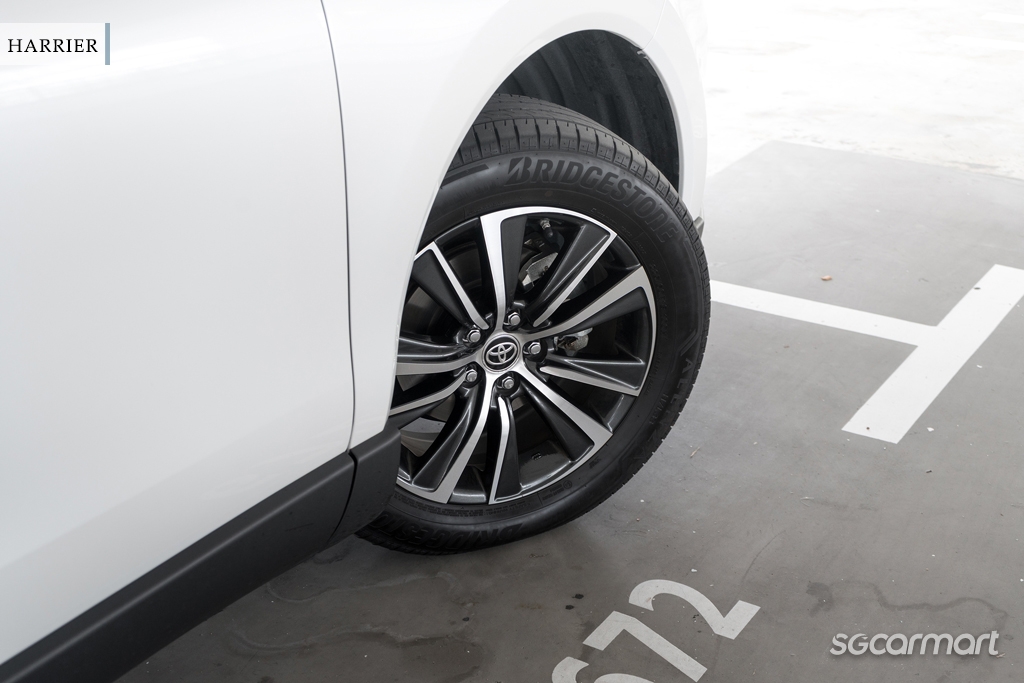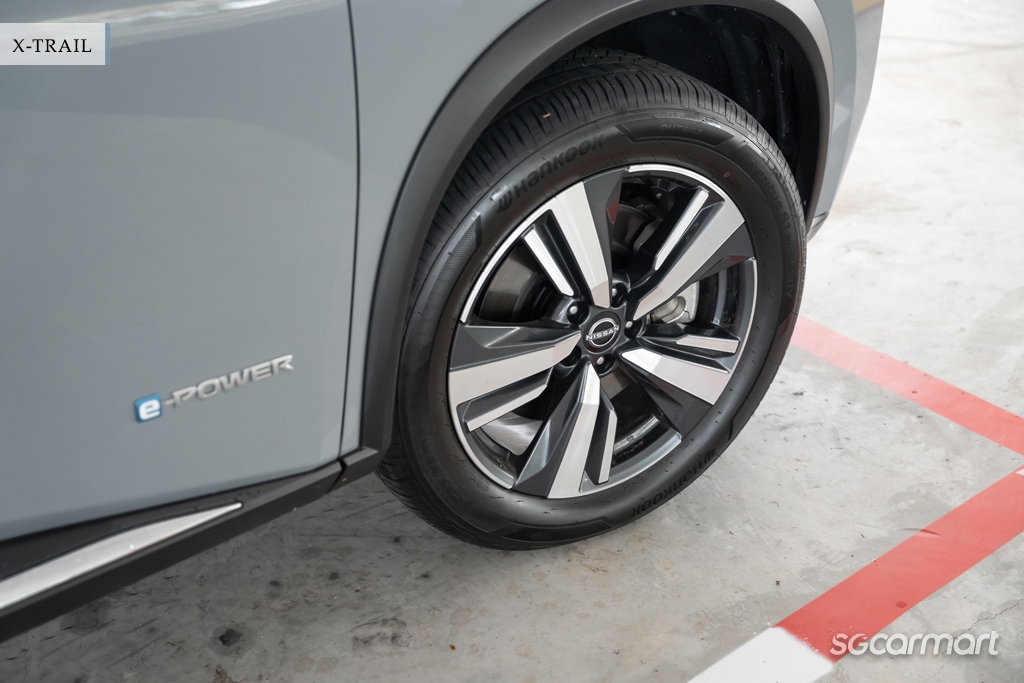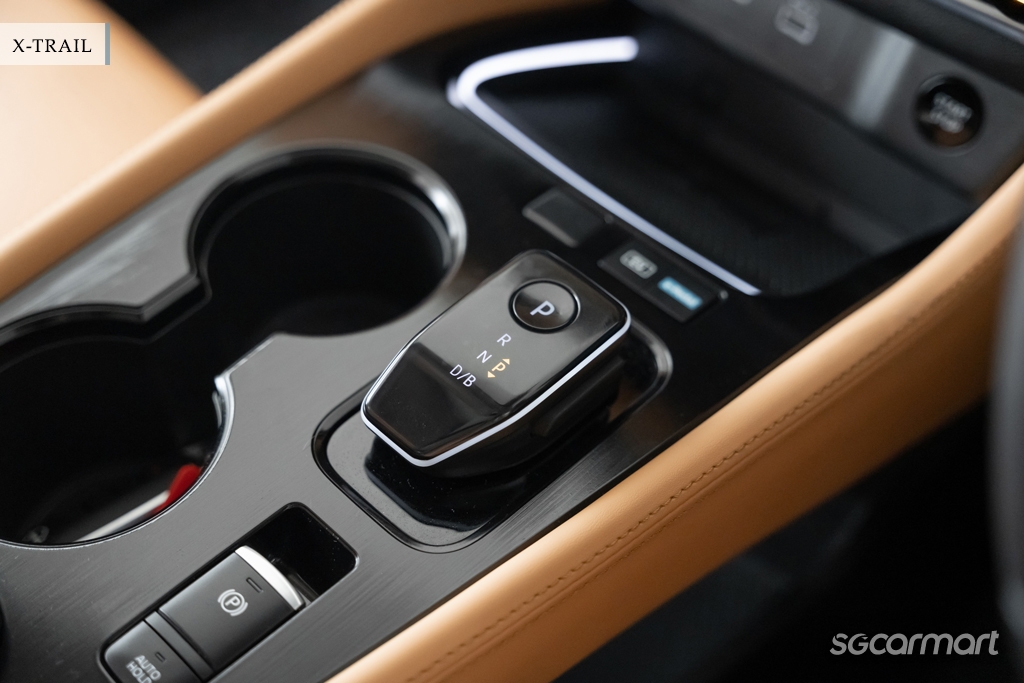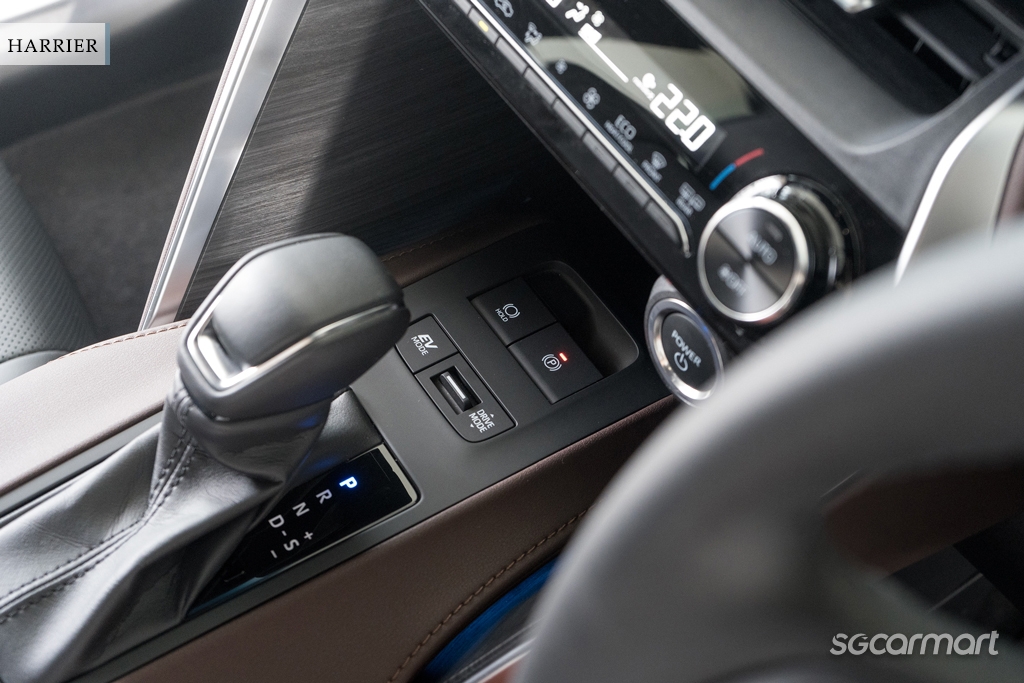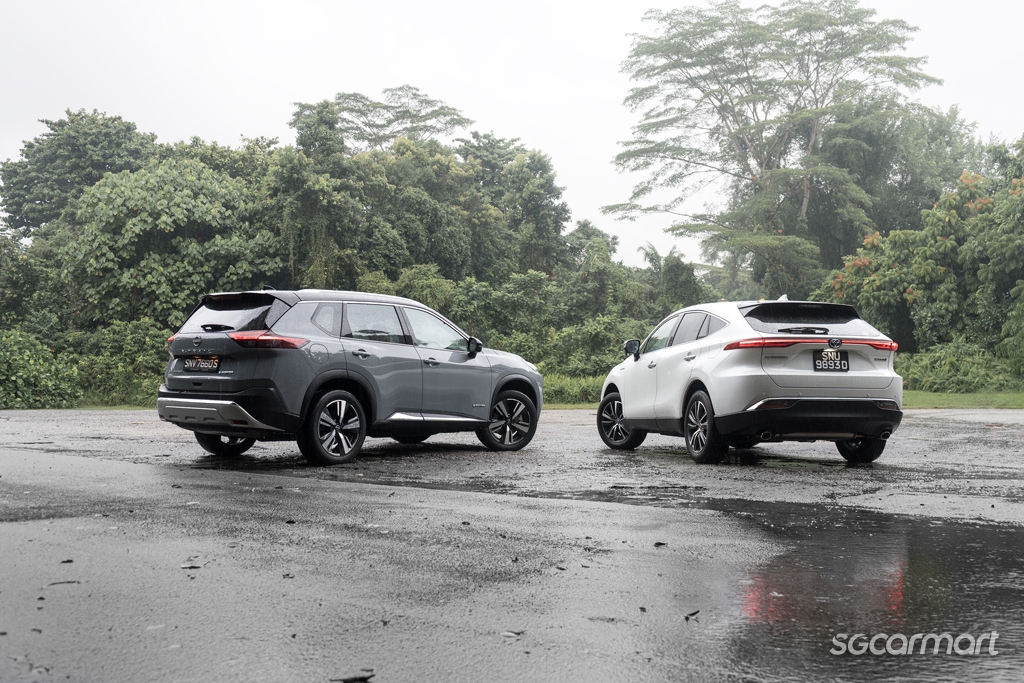Toyota Harrier Hybrid vs Nissan X-Trail e-POWER
29 Aug 2025|22,786 views
Toyota Harrier Hybrid Premium
It's the larger car
Cabin has more soft-touch surfaces
Softer ride quality
Weightier steering
More efficient powertrain
Nissan X-Trail e-POWER Prestige
Has Nappa leather upholstery
More advanced cockpit
Punchier and more powerful
Feels more responsive, too
Larger boot volume
Notably cheaper
Before electric SUVs became all the rage, hybrid SUVs were the choice of many drivers seeking a spacious, versatile, yet efficient runabout for the family.
With a hybrid powertrain, one can enjoy the roominess of an SUV while spending less on petrol than you would for a pure internal combustion vehicle. It's like having your cake and eating it, too.
The Harrier Hybrid and X-Trail e-POWER are models that would suit the family man or woman seeking a capable, fuel-efficient runabout. However, Toyota and Nissan have different hybrid systems. Let's find out which SUV would suit you best.
Design statements
One look at the Harrier and Toyota's intent is obvious: It wants the SUV's styling to reflect its upmarket aspirations. Sleek lines and gentle curves define the Harrier, with the slim head lights and rear light bar ensuring that it looks contemporary, too.
The Harrier is larger and wider than the X-Trail, which bodes well for interior space. Surprisingly, however, its wheelbase is 15mm shorter (2,690mm vs 2,705mm) than the X-Trail's. Fortunately, this doesn't affect interior room, which we'll come to in a bit.
The X-Trail's 'conventional' taillights stand out because many SUVs today are styled with a single light bar
The X-Trail, on the other hand, is clearly sportier than its rival and features a bolder-looking grille and sharper angles. Standing 65mm taller than the Harrier (1,725mm vs 1,660mm), the X-Trail has more road presence as well.
Although the X-Trail doesn't have a rear light bar, it doesn't look old. If anything, not following this trend helps it remain distinct in a growing sea of similar-looking SUVs.
The X-Trail's cockpit is more tech-forward, but both it and the Harrier thankfully utilise a lot of physical buttons
An inside look
The X-Trail's fully digital cockpit is more modern than the Harrier's. Facing the driver are a 12.3-inch instrument panel and 12.3-inch touchscreen display for the infotainment. There's also a 10.8-inch heads-up display (it's 10.5 inches in the Harrier).
The Harrier, on the other hand, still has an analogue instrument cluster, so the only layout that can be altered is the centre display. However, due to its compactness and the amount of info shown, it can be overwhelming for first-time users.
The Harrier's gauges are easily read at-a-glance, but menu navigation isn't as intuitive as the X-Trail's
Toyota's infotainment needs an upgrade. Although it is simple with few menus, its graphics don't belong in the Harrier's otherwise upmarket cabin. But compared to the X-Trail, it has even more soft-touch surfaces, plus ventilated and heated front seats (the X-Trail only has heated seats).
That said, there's nothing shabby about the X-Trail's cabin, which impresses with its Nappa leather upholstery, tri-zone climate control, and panoramic sunroof, which brightens the interior and gives it an airy feel.
The Harrier's has a roomy backseat, but the X-Trail's second-row can be made comfier thanks to the third climate zone
One of the big differences between the X-Trail and Harrier is the fact that the former has seven seats. However, the X-Trail is not a full-size seven-seater, and the last row is a tight fit. Realistically, you should consider this as a '5+2'.
Besides, with the last pair of seats folded, the X-Trail's boot offers 485 litres versus the Harrier's 396 litres. The X-Trail also has a lower loading height, making it easier to load/unload heavy luggage. Perhaps to make up for this, the Harrier has underfloor storage to keep loose items from rolling about.
The Harrier Hybrid's powertrain is more efficient than the X-Trail, but it's also gruffer and less responsive
Efficiency matters
The Harrier utilises a series-parallel hybrid. Most of the work is done by the 2.5-litre four-cylinder petrol engine, with the electric motor assisting and/or operating alone. The latter happens when the car is stationary or at low/crawling speeds as long as there is enough charge in the battery.
At the same time, the battery is recharged by the engine and by regenerative braking. These processes all happen automatically - all you need to do is drive the car.
Being a pioneer in hybrid technology has given Toyota tons of experience when it comes to building these and it shows: The Harrier averaged 18km/L (the official claimed figure is 21.7km/L) without hypermiling, and driven in a less-urgent manner, would easily clock 20km/L.
In Nissan's e-POWER system, the engine acts as a generator and is basically a range extender. It never directly powers the driven wheels, so in effect, the X-Trail e-POWER is an EV when it comes to power delivery.
The X-Trail's battery is charged by the 1.5-litre three-cylinder engine and regenerative braking. On paper, its efficiency lags behind the Harrier's, with Nissan claiming a combined 14.9km/L. However, my experience was better as I consistently managed 16km/L.
Differences in hybrid systems aside, the X-Trail is also heavier, weighing 1,929kg compared to the Harrier's 1,670kg. It also has an all-wheel drive system while the Harrier is front-wheel drive.
Driving discussion
Both SUVs are closely matched in terms of performance, with the Harrier and its 215bhp and 221Nm of torque giving it a century sprint time of 8.1 seconds. Meanwhile, the X-Trail delivers 211bhp and 330Nm of torque, enabling it to go from rest to 100km/h in 7.2 seconds.
However, the CVT drone in the Harrier is more audible and palpable than in the X-Trail, and hard driving only worsens it. In comparison, the X-Trail's delivery is not only seamless and quieter, but more responsive, too.
Only when the petrol motor comes on do you feel some roughness. But this is only momentary, because when you figure out how to keep the battery charged via regenerative braking, you can further minimise the engine's participation.
The X-Trail's mouse-like gear selector is intuitive and suits the SUV's high-tech interior, but the Harrier's includes a manual override function
The X-Trail is peppy and feels more driver-focussed, with the powertrain's responsiveness tempting you to punch it each time the road clears or an overtaking opportunity appears. If only the steering could support this with a weightier feel.
Now, if it's ride comfort you seek, you'll prefer the Harrier. Although the CVT drone here is louder, the ride quality is more pliant than the X-Trail's, which is something to appreciate given how undulating many of our roads have become.
Two approaches
If comfort and efficiency are what you seek, then the Harrier Hybrid does everything Toyota intended - and then some. It has a classy cabin filled with soft-touch surfaces and ventilated seats. And it's powered by the best series-parallel hybrid powertrain in the business to help ensure frugality.
But for my money, I'd go for the X-Trail. Its e-POWER system offers smooth and punchy delivery while letting you enjoy an electric drive without external charging, and as a keen driver, I like its sporty character. Plus the fact that its asking price is around $22k less than the Harrier's certainly doesn't hurt either.
These stories may interest you too
The Model Y takes on the G6 in this contest between two closely matched electric SUVs
Should you drive home the spacious MG HS or take the well-sorted Nissan Qashqai?
The Mercedes-Benz GLC gets a new variant to see to the entry-point of the BMW X3 range - we find out just which of these two you should drive home
Toyota Harrier Hybrid Premium
It's the larger car
Cabin has more soft-touch surfaces
Softer ride quality
Weightier steering
More efficient powertrain
Nissan X-Trail e-POWER Prestige
Has Nappa leather upholstery
More advanced cockpit
Punchier and more powerful
Feels more responsive, too
Larger boot volume
Notably cheaper
Before electric SUVs became all the rage, hybrid SUVs were the choice of many drivers seeking a spacious, versatile, yet efficient runabout for the family.
With a hybrid powertrain, one can enjoy the roominess of an SUV while spending less on petrol than you would for a pure internal combustion vehicle. It's like having your cake and eating it, too.
The Harrier Hybrid and X-Trail e-POWER are models that would suit the family man or woman seeking a capable, fuel-efficient runabout. However, Toyota and Nissan have different hybrid systems. Let's find out which SUV would suit you best.
Design statements
One look at the Harrier and Toyota's intent is obvious: It wants the SUV's styling to reflect its upmarket aspirations. Sleek lines and gentle curves define the Harrier, with the slim head lights and rear light bar ensuring that it looks contemporary, too.
The Harrier is larger and wider than the X-Trail, which bodes well for interior space. Surprisingly, however, its wheelbase is 15mm shorter (2,690mm vs 2,705mm) than the X-Trail's. Fortunately, this doesn't affect interior room, which we'll come to in a bit.
The X-Trail's 'conventional' taillights stand out because many SUVs today are styled with a single light bar
The X-Trail, on the other hand, is clearly sportier than its rival and features a bolder-looking grille and sharper angles. Standing 65mm taller than the Harrier (1,725mm vs 1,660mm), the X-Trail has more road presence as well.
Although the X-Trail doesn't have a rear light bar, it doesn't look old. If anything, not following this trend helps it remain distinct in a growing sea of similar-looking SUVs.
The X-Trail's cockpit is more tech-forward, but both it and the Harrier thankfully utilise a lot of physical buttons
An inside look
The X-Trail's fully digital cockpit is more modern than the Harrier's. Facing the driver are a 12.3-inch instrument panel and 12.3-inch touchscreen display for the infotainment. There's also a 10.8-inch heads-up display (it's 10.5 inches in the Harrier).
The Harrier, on the other hand, still has an analogue instrument cluster, so the only layout that can be altered is the centre display. However, due to its compactness and the amount of info shown, it can be overwhelming for first-time users.
The Harrier's gauges are easily read at-a-glance, but menu navigation isn't as intuitive as the X-Trail's
Toyota's infotainment needs an upgrade. Although it is simple with few menus, its graphics don't belong in the Harrier's otherwise upmarket cabin. But compared to the X-Trail, it has even more soft-touch surfaces, plus ventilated and heated front seats (the X-Trail only has heated seats).
That said, there's nothing shabby about the X-Trail's cabin, which impresses with its Nappa leather upholstery, tri-zone climate control, and panoramic sunroof, which brightens the interior and gives it an airy feel.
The Harrier's has a roomy backseat, but the X-Trail's second-row can be made comfier thanks to the third climate zone
One of the big differences between the X-Trail and Harrier is the fact that the former has seven seats. However, the X-Trail is not a full-size seven-seater, and the last row is a tight fit. Realistically, you should consider this as a '5+2'.
Besides, with the last pair of seats folded, the X-Trail's boot offers 485 litres versus the Harrier's 396 litres. The X-Trail also has a lower loading height, making it easier to load/unload heavy luggage. Perhaps to make up for this, the Harrier has underfloor storage to keep loose items from rolling about.
The Harrier Hybrid's powertrain is more efficient than the X-Trail, but it's also gruffer and less responsive
Efficiency matters
The Harrier utilises a series-parallel hybrid. Most of the work is done by the 2.5-litre four-cylinder petrol engine, with the electric motor assisting and/or operating alone. The latter happens when the car is stationary or at low/crawling speeds as long as there is enough charge in the battery.
At the same time, the battery is recharged by the engine and by regenerative braking. These processes all happen automatically - all you need to do is drive the car.
Being a pioneer in hybrid technology has given Toyota tons of experience when it comes to building these and it shows: The Harrier averaged 18km/L (the official claimed figure is 21.7km/L) without hypermiling, and driven in a less-urgent manner, would easily clock 20km/L.
In Nissan's e-POWER system, the engine acts as a generator and is basically a range extender. It never directly powers the driven wheels, so in effect, the X-Trail e-POWER is an EV when it comes to power delivery.
The X-Trail's battery is charged by the 1.5-litre three-cylinder engine and regenerative braking. On paper, its efficiency lags behind the Harrier's, with Nissan claiming a combined 14.9km/L. However, my experience was better as I consistently managed 16km/L.
Differences in hybrid systems aside, the X-Trail is also heavier, weighing 1,929kg compared to the Harrier's 1,670kg. It also has an all-wheel drive system while the Harrier is front-wheel drive.
Driving discussion
Both SUVs are closely matched in terms of performance, with the Harrier and its 215bhp and 221Nm of torque giving it a century sprint time of 8.1 seconds. Meanwhile, the X-Trail delivers 211bhp and 330Nm of torque, enabling it to go from rest to 100km/h in 7.2 seconds.
However, the CVT drone in the Harrier is more audible and palpable than in the X-Trail, and hard driving only worsens it. In comparison, the X-Trail's delivery is not only seamless and quieter, but more responsive, too.
Only when the petrol motor comes on do you feel some roughness. But this is only momentary, because when you figure out how to keep the battery charged via regenerative braking, you can further minimise the engine's participation.
The X-Trail's mouse-like gear selector is intuitive and suits the SUV's high-tech interior, but the Harrier's includes a manual override function
The X-Trail is peppy and feels more driver-focussed, with the powertrain's responsiveness tempting you to punch it each time the road clears or an overtaking opportunity appears. If only the steering could support this with a weightier feel.
Now, if it's ride comfort you seek, you'll prefer the Harrier. Although the CVT drone here is louder, the ride quality is more pliant than the X-Trail's, which is something to appreciate given how undulating many of our roads have become.
Two approaches
If comfort and efficiency are what you seek, then the Harrier Hybrid does everything Toyota intended - and then some. It has a classy cabin filled with soft-touch surfaces and ventilated seats. And it's powered by the best series-parallel hybrid powertrain in the business to help ensure frugality.
But for my money, I'd go for the X-Trail. Its e-POWER system offers smooth and punchy delivery while letting you enjoy an electric drive without external charging, and as a keen driver, I like its sporty character. Plus the fact that its asking price is around $22k less than the Harrier's certainly doesn't hurt either.
These stories may interest you too
The Model Y takes on the G6 in this contest between two closely matched electric SUVs
Should you drive home the spacious MG HS or take the well-sorted Nissan Qashqai?
The Mercedes-Benz GLC gets a new variant to see to the entry-point of the BMW X3 range - we find out just which of these two you should drive home
Car Information
Toyota Harrier Hybrid 2.5 Premium (A)
$266,888
CAT B|Petrol-Electric|21.2km/L
Horsepower
160kW (215 bhp)
Torque
221 Nm
Acceleration
8.1sec (0-100km /hr)
Promotion
Enjoy $2,000 in-house finance discount, free 3M solar film protection package and many more on your new CAT B Toyota models.
Read moreNissan X-Trail e-POWER e-4ORCE Hybrid Prestige [Single-Tone] (A)
$248,776
CAT B|Petrol-Electric|14.93km/L
Horsepower
157kW (211 bhp)
Torque
330 Nm
Acceleration
-
Promotion
Nissan year end mega promotions are here! Drive home your new CAT B Nissan and enjoy $10,888 mega discount and many more.
Read moreThank You For Your Subscription.
- Design Statements
- An Inside Look
- Efficiency Matters
- Driving Discussion
- Two Approaches






















































